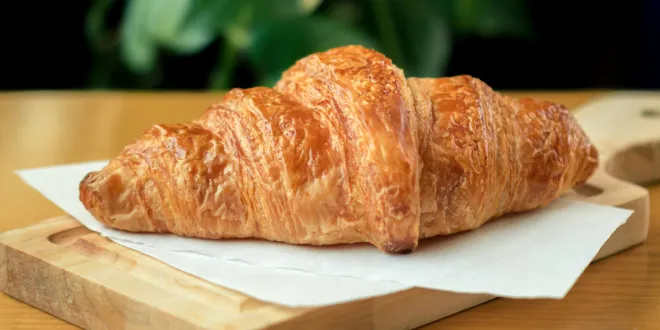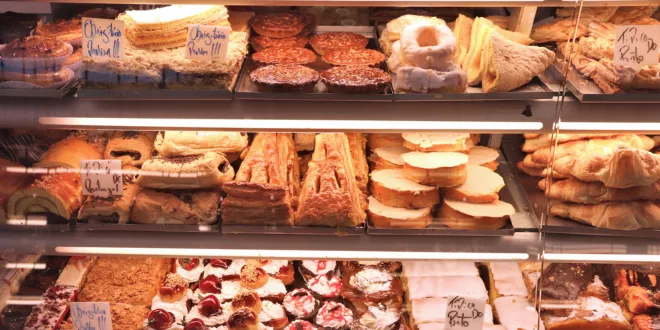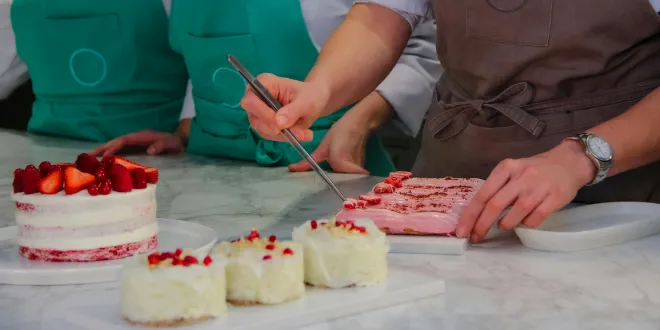Welcome to the ultimate French Pastry Guide, where centuries of culinary artistry meet modern baking techniques. French patisserie represents one of the world’s most refined dessert traditions, captivating taste buds with its delicate textures and sophisticated flavors.
Whether you’re a seasoned baker or a curious enthusiast, this comprehensive guide will navigate you through the enchanting world of French sweets.
From discovering Les types de pâtisseries françaises les plus populaires to mastering the art of Comment faire des croissants français authentiques, we’ll explore everything from beginner-friendly recipes to advanced techniques.
Our French Pastry Guide covers Pâtisseries françaises faciles à faire maison for everyday enjoyment, as well as special dietary considerations like Pâtisseries françaises sans œufs for those with specific needs.
We’ll take you on a virtual tour of Les meilleurs pâtisseries de Paris, sharing insider knowledge about the most prestigious establishments.
Learn the secrets behind Recette des macarons français parfaits and discover which Ingrédients essentiels pour la pâtisserie française are crucial for authentic results.
Plus, we’ll show you how to create beautiful Pâtisseries françaises pour Nowruz and other celebrations, bringing French elegance to your special occasions.
This French Pastry Guide serves as your passport to mastering the delicate art of French baking, combining traditional methods with practical modern approaches.

French Pastry Guide
French pastries represent one of the world’s most sophisticated and delicious dessert traditions, combining simple ingredients like flour, eggs, butter, sugar, and flavorings to create artistic masterpieces.
These pastries feature beautiful appearances and complex flavors, requiring precision and high skill levels. From simple cookies to luxurious desserts like crème brûlée and opera cake, each has its distinctive style.
French pastries aren’t just desserts but cultural expressions reflecting centuries of culinary evolution. The guide covers essential techniques, from laminated dough for croissants to delicate meringue work for macarons.
Understanding French pastry involves mastering terms like pâte à choux, pâte sablée, and pâte sucrée. Regional specialties showcase local ingredients and traditions.
Modern French pastry chefs innovate while respecting classical foundations established by legendary patissiers. The art requires proper equipment, quality ingredients, and patience. Temperature control, timing, and technique are crucial.
Whether making simple financiers or complex entremets, French pastry demands respect for tradition combined with creative flair.
This comprehensive guide helps enthusiasts understand the philosophy, techniques, and cultural significance behind these beloved treats that have influenced pastry arts worldwide.
Les types de pâtisseries françaises les plus populaires
- Croissants
- Macarons
- Éclairs
- Tarte Tatin
- Mille-feuille
- Madeleines
- Canelés
- Tarte aux Pommes
- Chouquettes
- Financiers
Croissants
Classic French pastry with flaky laminated dough layers, buttery almond flavor, and crispy texture. Requires precise lamination technique and cold butter for perfect crescent shape.
Macarons
Delicate almond meringue sandwich cookies with smooth tops, ruffled feet, and hollow centers. Filled with ganache, buttercream, or jam in endless flavor combinations.
Éclairs
Long choux pastry puffs filled with vanilla cream and topped with glossy chocolate glaze. Light, airy texture with rich custard filling and sweet coating.
Tarte Tatin
Upside-down caramelized apple tart baked in butter and sugar. Features golden caramelized fruit topping golden buttery pastry base with sweet cinnamon flavor.
Mille-feuille
“Thousand leaves” pastry with layers of puff pastry and vanilla pastry cream. Crispy layers alternate with smooth custard, topped with powdered sugar glaze.
Madeleines
Small sponge cakes baked in shell-shaped molds with lemon zest. Moist, tender texture with distinctive shell imprint and bright citrus flavor profile.
Canelés
Small custard pastries with dark caramelized sugar exterior and soft, tender center. Infused with vanilla and rum, creating rich, complex flavor combination.
Tarte aux Pommes
Classic apple tart with thin sliced apples arranged on sweet pastry base. Features cinnamon-spiced fruit topping golden, buttery crust with sweet, fruity flavor.
Chouquettes
Light choux pastry puffs topped with pearl sugar for breakfast treats. Airy, hollow interior with crispy sugar topping and delicate, buttery choux flavor.
Financiers
Almond flour-based small cakes originally baked in gold bar-shaped molds. Nutty, moist texture with brown butter flavor and tender, delicate crumb structure.
Comment faire des croissants français authentiques
Creating authentic French croissants requires patience, precision, and proper technique. Start with high-quality ingredients: bread flour, butter, milk, sugar, salt, and active dry yeast.
Begin by making a basic dough, mixing flour, sugar, salt, and yeast, then adding warm milk and egg. Knead until smooth, let rise for one hour. The crucial step is laminating the dough.
Roll dough into a rectangle, place cold butter in the center, fold dough over butter, then roll again. Complete three turns, chilling between each to prevent butter melting.
After final turn, roll dough to 5mm thickness, cut triangles measuring 10cm base and 18cm height. Stretch gently, fold corners under, then roll from base to tip.
Curve ends to create crescent shape. Proof for 1-2 hours until doubled. Brush with egg wash for golden finish. Bake at 200°C for 15-18 minutes until golden brown. The key secrets are cold butter, proper rolling technique, and sufficient proofing.
Authentic croissants should have visible layers, buttery flavor, and flaky texture. Practice makes perfect, as mastering lamination takes experience. Quality European butter enhances flavor significantly.
Pâtisseries françaises faciles à faire maison
Making French pastries at home can be surprisingly accessible with the right approach and recipes. Start with simpler items like madeleines, requiring just flour, eggs, sugar, butter, and lemon zest.
Their shell-shaped molds create beautiful results with minimal effort. Financiers offer another excellent beginner option using almond flour, egg whites, and brown butter for rich nutty flavor.
Macarons, while challenging, have countless online tutorials and can be mastered with practice. Focus on proper meringue technique and consistent piping.
Chouquettes use basic choux pastry technique, perfect for learning piping and baking fundamentals. Simple tarts like tarte aux pommes require minimal ingredients but deliver impressive results.
Use store-bought puff pastry for easier mille-feuille versions. Crème brûlée needs just cream, eggs, sugar, and vanilla, with the torch technique being learnable at home. Key tips include using quality ingredients, precise measurements, and following temperatures carefully.
Invest in basic tools like piping bags, good baking sheets, and digital thermometer. Start with 3-4 simple recipes, master them, then progress to complex items.
Online video tutorials help visualize techniques. French pastry-making becomes rewarding when starting simple and building skills gradually while enjoying the delicious results.

Pâtisseries françaises sans œufs
French egg-free pastries offer delicious alternatives for those with allergies or dietary restrictions. Traditional French cuisine includes several naturally egg-free options. Madeleines can be adapted using aquafaba (chickpea liquid) or applesauce as egg substitutes.
Financiers work well with aquafaba replacing egg whites, maintaining their characteristic almond flavor and tender texture. Choux pastry can be modified using water, flour, and butter, though texture may vary slightly.
Many tarts and tartes use only pastry cream made with cornstarch instead of eggs. Galettes des rois (king cakes) can be made with frangipane using ground almonds, sugar, and butter without eggs.
Profiteroles can use egg-free choux pastry successfully. Macarons present more challenge but can be made with aquafaba meringue. Fruit tarts often rely on pastry cream thickened with cornstarch.
Traditional pain au chocolat uses only flour, butter, sugar, salt, and yeast. Croissants can be made egg-free though glazing requires alternatives.
Key substitutions include using flax eggs, applesauce, or commercial egg replacers. Cornstarch works excellently for custards. These adaptations maintain French pastry character while accommodating dietary needs, proving that delicious egg-free French desserts are entirely possible.
Les meilleurs pâtisseries de Paris
Paris houses some world’s finest pastry shops, each offering unique specialties and legendary reputations. Pierre Hermé dominates the macaron scene with innovative flavor combinations like Ispahan (rose, lychee, raspberry).
Ladurée, the original macaron creator, maintains elegant salons with classic varieties and seasonal offerings. Jacques Genin creates exceptional chocolates and caramels alongside beautiful pastries in his Marais boutique.
Christophe Adam’s Saint-Germain shop features creative entremets and artistic presentations. Eric Kayser offers outstanding breads and pastries, particularly croissants and seasonal specialties.
Dalloyau specializes in opulent cakes and traditional French desserts with beautiful packaging. Boulangerie Poilâne serves legendary sourdough breads alongside quality pastries.
Yann Couvreur’s creations blend modern techniques with classic foundations, particularly his signature “Cronut” variations. Stohrer, Paris’s oldest bakery, maintains authentic recipes since 1730.
Maison Kayser offers consistent quality across multiple locations. Gontran Cherrier brings organic ingredients to traditional techniques. Each patisserie reflects distinct philosophy, from heritage preservation to innovative modern approaches.
These establishments represent centuries of pastry evolution, combining artistry, tradition, and culinary excellence. Visiting these iconic shops provides authentic taste of French pastry culture and craftsmanship.
Recette des macarons français parfaits
Perfect French macarons require precise technique and quality ingredients. Start with 100g almond flour, 200g powdered sugar, 110g egg whites, and 100g granulated sugar. Age egg whites for 24 hours or pasteurize for safety.
Sift almond flour and powdered sugar together twice to eliminate lumps. Beat egg whites until foamy, gradually add granulated sugar, continuing until stiff peaks form.
Fold dry ingredients into meringue using macaronage technique – fold gently until batter flows like lava and forms ribbons. Pipe 3cm rounds onto parchment-lined baking sheets.
Tap sheets firmly to eliminate air bubbles, let dry 30-60 minutes until skin forms. Bake at 150°C for 15-18 minutes. Cool completely before filling.
Fill with ganache, buttercream, or jam. Key success factors include proper almond flour sifting, correct meringue consistency, adequate drying time, and accurate oven temperature.
Humidity affects results significantly. Use Italian or Swiss meringue methods for more stability. Colorants should be gel-based. Practice timing and temperature adjustments.
Perfect macarons have smooth tops, ruffled feet, and hollow interior. The delicate balance between crisp exterior and chewy interior defines success. Master basic vanilla first, then experiment with flavors.

Pâtisseries françaises pour Nowruz
French pastries beautifully complement Nowruz celebrations, blending French elegance with Persian traditions. Traditional sabzeh sprouts can inspire green-colored macarons using pistachio or matcha flavors.
Rose water, essential in Persian cuisine, enhances French macarons and madeleines perfectly. Almond-based financiers reflect both French technique and Persian nut preferences.
Saffron can infuse French custards and crème brûlée, creating luxurious golden desserts. Fruit tarts featuring seasonal Persian fruits like quince, pomegranate, or barberry offer beautiful presentations.
Traditional French galettes des rois can incorporate Persian spices like cardamom or cinnamon. Croissants can be filled with rose petal jam or saffron cream for festive variations. Éclairs can feature pistachio or orange blossom flavors popular in Persian desserts.
Mille-feuille layers can include saffron pastry cream with rose petal garnish. These fusion creations honor both cultures beautifully.
French techniques elevate traditional Persian flavors while maintaining cultural significance. The elegant presentation suits Nowruz table settings perfectly. These pastries can replace traditional samanu, offering lighter alternatives.
Colorful macarons represent Nowruz’s seven symbols beautifully. Combining French pastry artistry with Persian flavors creates memorable celebrations that honor both traditions meaningfully.
Ingrédients essentiels pour la pâtisserie française
Essential French pastry ingredients form the foundation of countless classic recipes. Butter must be high-quality European style with 82% fat content for superior flavor and texture.
Flour types include T45 or cake flour for delicate items, T55 for general use, and bread flour for laminated doughs. Eggs should be fresh, preferably organic, separated when needed for meringues.
Sugar varieties encompass granulated for general use, powdered for smooth textures, and specialty sugars like pearl sugar for chouquettes. Almond flour is crucial for macarons, financiers, and frangipane. Heavy cream with 35% fat content creates stable whipped cream and rich custards. Vanilla beans or extract provide authentic flavoring.
Salt enhances other flavors, with fleur de sel being preferred. Yeast types include instant for sweet doughs and fresh for traditional recipes. Cornstarch thickens pastry creams without adding flour taste.
Cocoa powder should be high-quality Dutch-processed for chocolate pastries. Lemon zest adds brightness to madeleines and tartes. Gelatin stabilizes mousses and glazes.
Food coloring should be gel-based for intense colors without affecting texture. These premium ingredients, combined with proper technique and equipment, create authentic French pastry excellence that defines this revered culinary tradition.

Conclusion
This comprehensive French Pastry Guide empowers you to journey from beginner to expert in the art of French patisserie. By exploring Les types de pâtisseries françaises les plus populaires, you’ll discover that each French dessert carries its own unique character and rich history.
Mastering Comment faire des croissants français authentiques requires patience and practice, but our guide makes it achievable. For beginners, Pâtisseries françaises faciles à faire maison offer excellent starting points that even novice bakers can successfully attempt.
Understanding Ingrédients essentiels pour la pâtisserie française plays a crucial role in achieving authentic results. Whether you need Pâtisseries françaises sans œufs for dietary restrictions or want to create special Pâtisseries françaises pour Nowruz celebrations, this guide accommodates all needs.
The secrets of Recette des macarons français parfaits are now accessible to home bakers, while knowledge about Les meilleurs pâtisseries de Paris helps you appreciate the finest examples of this culinary art.
This French Pastry Guide serves as your complete resource for mastering French baking techniques, combining traditional French methods with practical modern approaches. With dedication and the right guidance, anyone can create authentic French pastries that rival those from the most prestigious Parisian patisseries.
Frequently asked questions
1. Comment faire des croissants français authentiques à la maison?
Mastering authentic French croissants requires laminated dough technique, precise folding, and patience. The process involves creating butter layers within dough through multiple rolling and folding stages.
Proper fermentation and baking at high temperature create the characteristic flaky texture. Practice and attention to detail are essential for perfect results.
2. Quelle est la pâtisserie française la plus facile pour débuter?
La tarte aux pommes represents the easiest French pastry for beginners. This classic dessert requires simple ingredients: apples, sugar, butter, and puff pastry.
The technique involves arranging sliced apples on sweetened pastry base. Minimal equipment and straightforward steps make it ideal for novice bakers seeking authentic French flavor.
3. Quels sont les ingrédients essentiils pour la pâtisserie française?
Essential French pastry ingredients include high-quality butter, precise flour types, fresh eggs, vanilla extract, and specialty items like pâte à choux, crème pâtissière, and glaçage.
Quality chocolate, almonds, and seasonal fruits are fundamental. Professional tools such as piping bags, spatulas, and precise measuring equipment ensure authentic results.
4. Recette complète des macarons français parfaits?
Perfect French macarons require almond flour, powdered sugar, egg whites, and fine granulated sugar. The key lies in proper meringue preparation, precise mixing technique, and controlled baking temperature.
Creating smooth shells with characteristic feet requires practice. Fill with ganache, buttercream, or jam for complete authentic experience.
5. Où trouver les meilleurs pâtisseries de Paris?
Paris boasts legendary patisseries including Pierre Hermé, Ladurée, and Angelina. Saint-Germain-des-Prés and Le Marais neighborhoods house exceptional artisanal shops.
Look for establishments with fresh daily production, traditional techniques, and creative modern interpretations. Local recommendations and food guides help discover hidden gems throughout the city.
6. Comment faire des pâtisseries françaises sans œufs?
Egg-free French pastries substitute eggs with applesauce, mashed banana, or commercial egg replacers. Aquafaba works excellently for meringues and macarons.
Adjust liquid content and leavening agents accordingly. Many traditional recipes like financiers and certain tarts naturally work well without eggs when properly adapted.
7. Quelle est la différence entre brioche et pâtisserie française?
Brioche is specific enriched bread with high butter and egg content, while French patisserie encompasses diverse sweet desserts.
Brioche serves as breakfast item or bread, whereas patisseries are typically dessert category. Both require similar techniques but differ in texture, sweetness level, and presentation style.
8. Pâtisseries françaises pour fêtes et occasions spéciales?
French celebration pastries include elaborate entremets, traditional bûche de Noël, and decorative tarts. Seasonal specialties like galette des rois and madeleines are perfect for gatherings.
Professional patisseries create custom designs for weddings and special events, combining traditional techniques with modern artistic presentation.
9. Quelles sont les pâtisseries françaises les plus populaires?
Popular French pastries include croissants, pain au chocolat, macarons, éclairs, and tarte Tatin. Classic favorites like crème brûlée, mille-feuille, and chouquettes dominate bakery displays.
Regional specialties and seasonal offerings complement these timeless standards, representing France’s rich patisserie heritage.
10. Comment faire des pâtisseries françaises plus légères?
Lighter French pastries use reduced sugar, substitute butter with healthier oils, and incorporate fresh fruits. Whipped cream replaces heavy custards, while whole grain flours add nutrition.
Portion control and fresh preparation maintain flavor while reducing calories. Modern interpretations preserve traditional taste with healthier ingredient choices.

